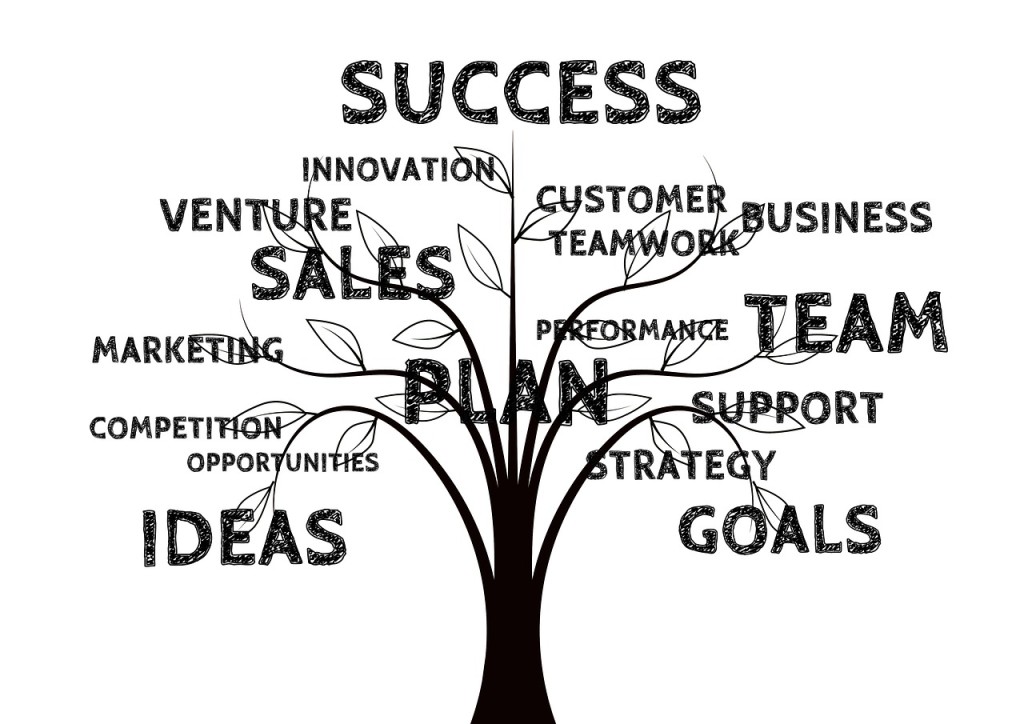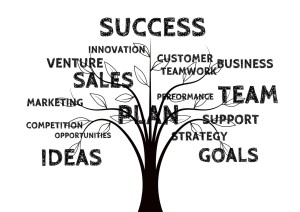Q2 is the quarter that can make or break your year. Every business year has a natural momentum: Q1 always starts strong – everyone is excited about the shiny, new annual plan that’s just put into place. Q3 presents another mental fresh start with the launch of a new school year, and in Q4 everyone moves into high gear, working with greater urgency to make a strong finish.

But Q2 can be deadly. It’s the time companies are most likely to lose their momentum. The annual plan was made on predictions and assumptions, and by Q2 you know how well these are playing out. The big, lofty goals in the annual plan that motivated everyone back in January now seem impossible, so the team (including the CEO) puts the plan back on the shelf.
Or revenue spikes and it’s “all hands on deck” for client delivery, and important operational efficiency or team health work gets postponed to achieve short-term goals. Or maybe the annual plan wasn’t balanced – too much was stuffed into Q1, with no major priorities or initiatives for the rest of the year, so everyone just goes into cruise control mode and growth stagnates. Summer months are approaching, kids are nearly out of school, everyone’s starting to plan their vacations and things start slowing down. Yet the business still needs to drive forward.
The second quarter is the critical inflection point for the year, and the only way to prevent stagnation is through careful planning. Creating a strong Q2 plan sets the stage to carry momentum through the summer – to keep the team engaged and accountable for delivering results. In Q2, you may look at your annual plan and see it’s not quite working as you’d expected. You see it may need some adjustments, which is hard to do, but if the end result is an engaged and excited team, it’s worth making the changes.
Make every quarter count
Insight CXO’s 13-Week-Race© planning tool (PDF) was created to ensure that every quarter is as strong as the last and the next. It looks at the quarterly “Rocks” (your major goals), breaks them down into their component tasks and load-balances them throughout the quarter.
5 ways to make Q2 stronger
- Break down the quarterly Rocks into 13 weeks, with each Rock further broken down into its component parts throughout the quarter. The more detail the better.
- Be very intentional about letting the team know that Q2 is the pivotal quarter of the year. A strong Q2 makes for an easy Q3 and great end of the year.
- Look at the 13-Week Race weekly with the team. Don’t let tasks and action items go more than two weeks without updates or adjustments.
- Have your team verbally commit in front of each other that they believe 100% in the Q2 plan and will do what it takes to make it happen.
- Create a fun reward for having a great Q2. Engage the team in the reward development so they own it and make it their own.
Don’t let your annual plan hit the shelf in Q2. Treat Q2 as the No. 1 quarter to have a great year, and you’ll reap the results with a happy and engaged team.






 d
d 

 Does your company have a proven and repeatable Annual Planning process that is used and referenced throughout the year? Does the full company
Does your company have a proven and repeatable Annual Planning process that is used and referenced throughout the year? Does the full company 


 One of most misunderstood or left out components of the Gazelles One Page Strategic Plan is the QUARTERLY THEME section. For larger companies, this is one of the most powerful and transformational techniques that you can leverage for growth.
One of most misunderstood or left out components of the Gazelles One Page Strategic Plan is the QUARTERLY THEME section. For larger companies, this is one of the most powerful and transformational techniques that you can leverage for growth.
 I facilitate planning retreats every week and I’m always fascinated by the concept of the CASH CONVERSION CYCLE and how it engages every person in the room. Typically, the concept of cash is left to the business owner and the Controller and/or CFO. Cash is like oxygen for the business. Without it, the business simply dies. So the question is “how can we generate as much cash as possible to fuel growth and reduce the need for outside financing?” There are four parts of the CASH CONVERSION CYCLE and all four need to be analyzed and shortened as much as possible:
I facilitate planning retreats every week and I’m always fascinated by the concept of the CASH CONVERSION CYCLE and how it engages every person in the room. Typically, the concept of cash is left to the business owner and the Controller and/or CFO. Cash is like oxygen for the business. Without it, the business simply dies. So the question is “how can we generate as much cash as possible to fuel growth and reduce the need for outside financing?” There are four parts of the CASH CONVERSION CYCLE and all four need to be analyzed and shortened as much as possible:
 I get asked all the time what is the number one thing a company can do to leverage the Rockefeller Habits and tighten up execution. Daily and Weekly meetings are often unstructured, boring and push aside in most companies but are the quickest way to solve problems quickly and get more work done. I’m assuming you ARE holding your Monthly, Quarterly and Annual meetings.… right? Your meeting rhythm is like the heartbeat of the organization that supplies blood and oxygen to the rest of the company. Without it, issues don’t get uncovered, processes don’t get cleaned up, execution/accountability fades away and key strategic initiatives and adjustments don’t get made. In short, hundreds or of decisions that should be leveraging the collective minds of the organization on an annual basis just never happen. Your company’s success can be equated to the sum total of all the decisions, both good and bad, that happen in a year.
I get asked all the time what is the number one thing a company can do to leverage the Rockefeller Habits and tighten up execution. Daily and Weekly meetings are often unstructured, boring and push aside in most companies but are the quickest way to solve problems quickly and get more work done. I’m assuming you ARE holding your Monthly, Quarterly and Annual meetings.… right? Your meeting rhythm is like the heartbeat of the organization that supplies blood and oxygen to the rest of the company. Without it, issues don’t get uncovered, processes don’t get cleaned up, execution/accountability fades away and key strategic initiatives and adjustments don’t get made. In short, hundreds or of decisions that should be leveraging the collective minds of the organization on an annual basis just never happen. Your company’s success can be equated to the sum total of all the decisions, both good and bad, that happen in a year.